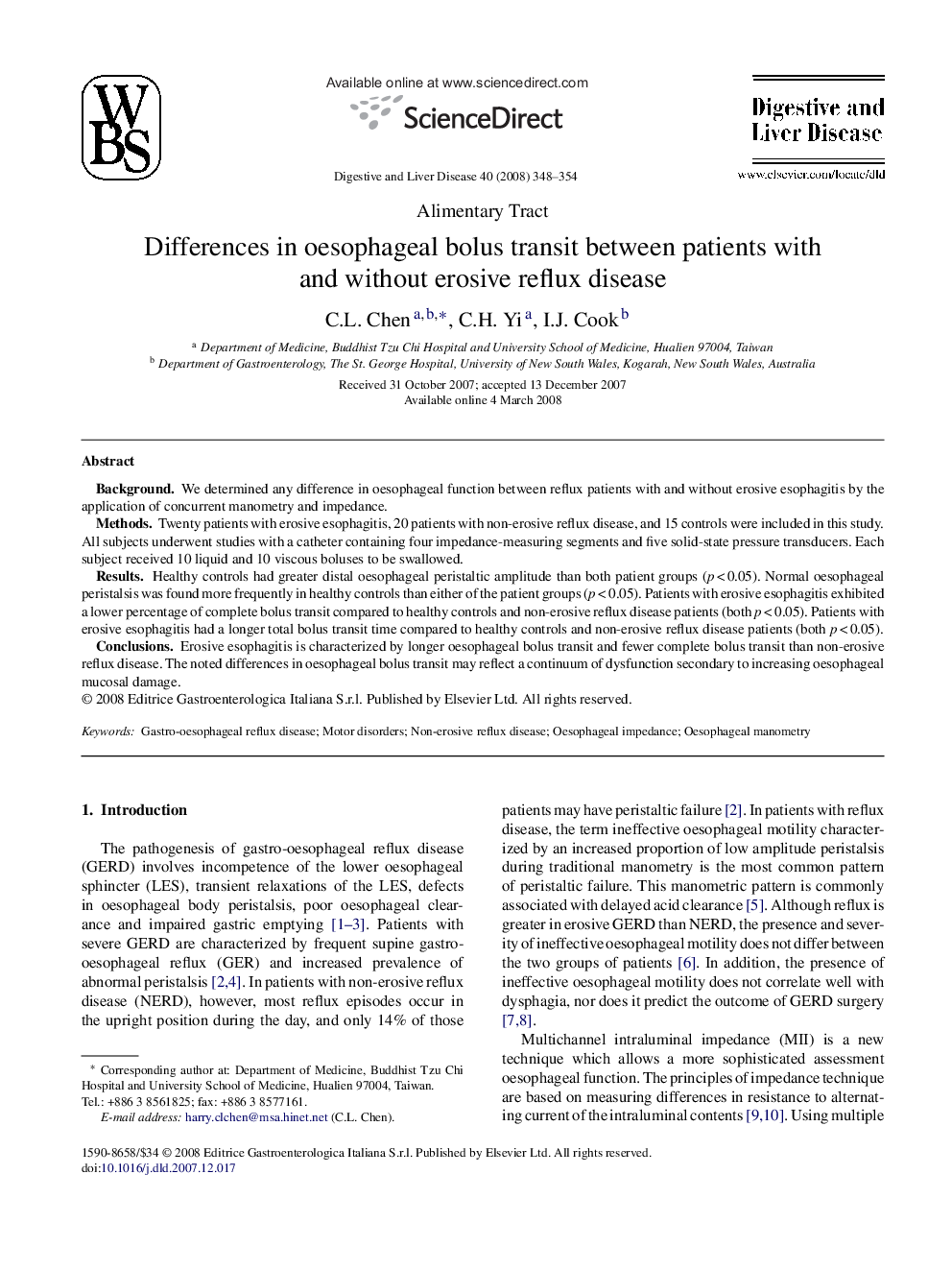| Article ID | Journal | Published Year | Pages | File Type |
|---|---|---|---|---|
| 3264746 | Digestive and Liver Disease | 2008 | 7 Pages |
BackgroundWe determined any difference in oesophageal function between reflux patients with and without erosive esophagitis by the application of concurrent manometry and impedance.MethodsTwenty patients with erosive esophagitis, 20 patients with non-erosive reflux disease, and 15 controls were included in this study. All subjects underwent studies with a catheter containing four impedance-measuring segments and five solid-state pressure transducers. Each subject received 10 liquid and 10 viscous boluses to be swallowed.ResultsHealthy controls had greater distal oesophageal peristaltic amplitude than both patient groups (p < 0.05). Normal oesophageal peristalsis was found more frequently in healthy controls than either of the patient groups (p < 0.05). Patients with erosive esophagitis exhibited a lower percentage of complete bolus transit compared to healthy controls and non-erosive reflux disease patients (both p < 0.05). Patients with erosive esophagitis had a longer total bolus transit time compared to healthy controls and non-erosive reflux disease patients (both p < 0.05).ConclusionsErosive esophagitis is characterized by longer oesophageal bolus transit and fewer complete bolus transit than non-erosive reflux disease. The noted differences in oesophageal bolus transit may reflect a continuum of dysfunction secondary to increasing oesophageal mucosal damage.
